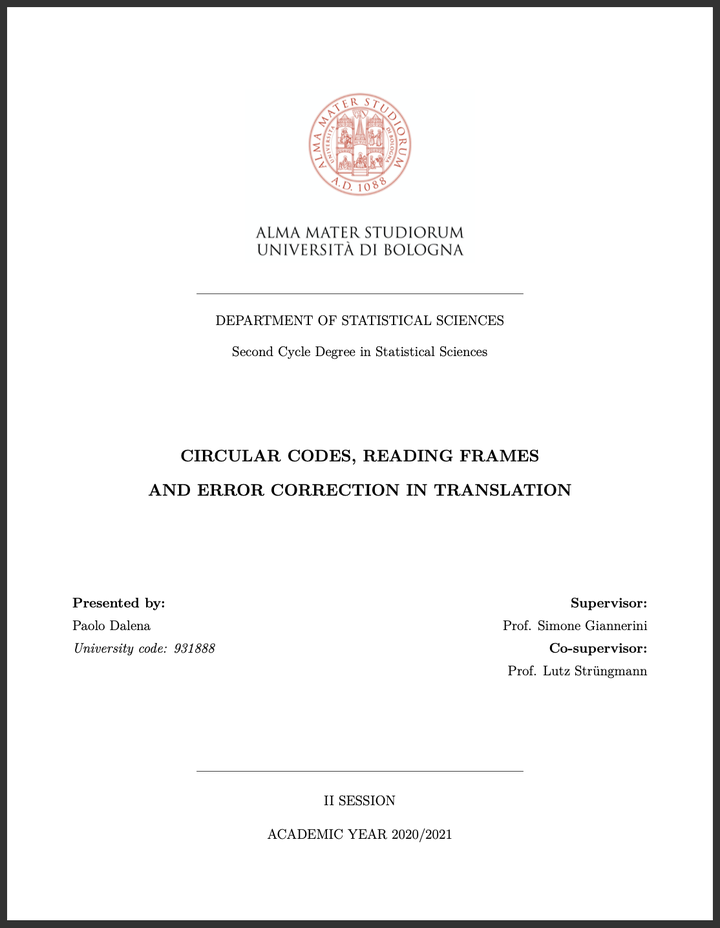Master Thesis

This work is the result of a collaboration with the Institute of Mathematical Biology (Department of Computer Science, Mannheim University of Applied Sciences) and Professor Simone Giannerini from the University of Bologna.
This research has been going on for several years, is constantly evolving and covers many different fields. So, the results in my thesis are just one step. If you are curious, you can read the article presenting the results immediately preceding my work that guided us in our analysis. For further information, please refer to the bibliography of the dissertation.
Click here to download the pdf file. If you’re interested in further material related to this topic, don’t hesitate to contact me!
ABSTRACT:
The presence of error correction mechanisms involved in translation has been ascertained but their elucidation requires a mathematical framework which is still missing. Comma-free codes are synchronizable error correcting codes that were introduced by Sir Francis Crick in 1957 to tackle the difficult problem of frame retrieval during translation. Despite its appeal the proposal was discarded but in 1996, thanks to a large scale exploratory analysis of coding sequences, a weaker form of comma-free codes, called circular codes, were hypothesized to be involved in the translation machinery. Recent works established a connection between circular codes and group theory and identified a set of 216 circular codes possessing desirable mathematical properties. These, in turn, can be partitioned into 27 equivalence classes according to the 8 nucleotide transformations linked to the dihedral group of symmetry. The coverage of a circular code is a measure of its compliance with a specific sequence or organism. It has universal properties, is strongly correlated with translation accuracy and behaves differently in the initial and final parts of the sequences. This agrees with the molecular biology of the translation process and raises interesting questions. This thesis moves from these results and studies both the codon usage and the code coverage in 24 different organisms. The analyses are carried out in the R environment and part of the work has been devoted to collaborating at the development of the R package mathDNA, which implements some of the functions used in the analysis. The results confirm the different behavior in terms of code coverage and codon usage at the beginning and at the end of the sequences and proves that there is a universal and complex relationship between the coverage of two sets of codes linked by Keto-Amino transformation. The existence of a correlation between the length of a sequence and the code coverage is also found.